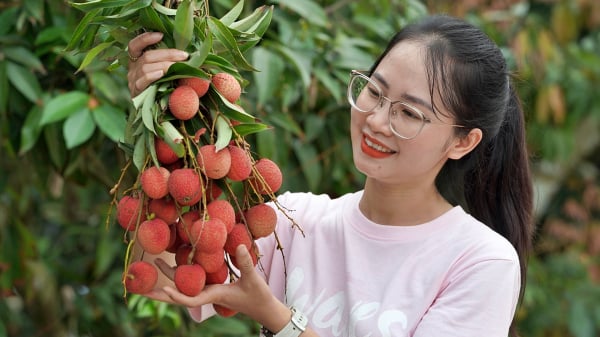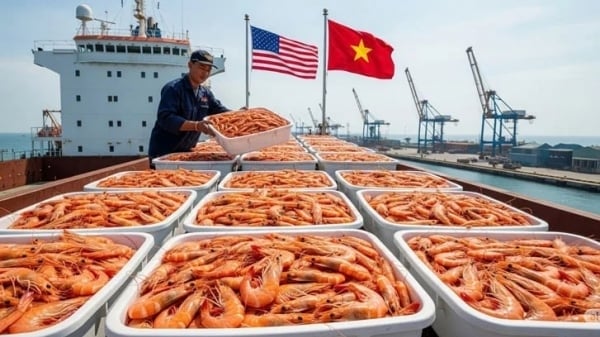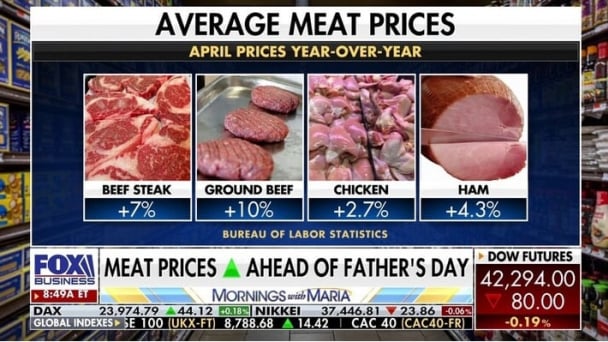June 15, 2025 | 20:41 GMT +7
June 15, 2025 | 20:41 GMT +7
Hotline: 0913.378.918
June 15, 2025 | 20:41 GMT +7
Hotline: 0913.378.918

Gardeners harvest durian in Dak Lak. Photo: Nguyen Thuy.
Citing data from Chinese Customs, the Vietnam Vegetable and Fruit Association announced that, during the first 10 months of 2023, China imported nearly 1,359,000 tons of durian with a total value of $ 6.373 billion; an increase of 88.3% in volume and 81% in value over the same period in 2022.
In particular, Thailand is the largest durian supplier in the Chinese market with a quantity of nearly 904,000 tons, increasing by 27.7%, reaching a value of $ 4.42 billion(up 27.7% over the same period last year).
Vietnam is the second largest durian supplier to the Chinese market but ranks first in terms of growth rate. Vietnam's durian output exported to China reached nearly 452,000 tons, an increase of 3.19%; the value reached $ 1.94 billion, up 3.1% over the same period last year.
In third place is the Philippines, with an output of only 3,333 tons and a value of nearly $ 12 million.
Compared to China's durian imports in 2022, imports in 2023 increased by 88.3% in volume and 81% in value.
According to Mr. Dang Phuc Nguyen, General Secretary of the Vietnam Fruit and Vegetable Association, currently, the value of Vietnam's durian exports to China has reached nearly 50% compared to Thailand. While Vietnam has only been licensed to officially export fresh durian to China, Thailand has licenses for all three products: fresh durian, frozen durian and processed durian.
"In the near future, if Vietnam is licensed to officially export both frozen and processed durian and other fruit and vegetable products that are under negotiation, especially fresh coconut and processed coconut... the vegetable and fruit turnover will increase even more strongly.
I believe that the figure of $ 6.5 billion still does not show the full potential of the Chinese durian market, it can reach $ 10 - 20 billion in just a few years", Mr. Nguyen said.

According to Mr. Nguyen, in order for Vietnamese durian to penetrate deeply into the potential Chinese market, in addition to promoting durian quality and issuing growing area codes, localities also need to control and minimize fraud in Production Unit codes, affecting the exported Vietnamese durian brand.
Mr. Ngo Xuan Nam, Deputy Director of SPS Office Vietnam, said that Chinese consumers prefer to buy whole boxes of durian, instead of buying individual durians. Meanwhile, each box of 6 durians weighs about 18-20kg. Thus, on average each durian fruit is 3-3.5kg.
Therefore, gardeners as well as Vietnamese businesses need to pay attention to this issue. On the other hand, harvesting durian also needs to be done methodically and properly. If just one part of the durian thorn is crushed, it can cause moisture and microorganisms to penetrate through the durian's epidermis, making the durian flavour no longer fresh, and can even cause rot when stored for a long time... Or the durian may be easily damaged when exposed to rain, so the harvest time needs to be delayed for a few days for the fruit to grow back to normal, ensuring quality.
Additionally, it is necessary to pay attention to measures to control the phenomenon of brown rice such as applying enough fertilizer, growing durian by asexual propagation, managing water strictly, and not providing the soil with too much water or too high humidity...
For sustainable development, Mr Nam recommended that people, cooperatives, businesses and the entire durian industry need to comply with the provisions of the Protocol. In particular, pay attention to the tastes of export markets.
China is the world's largest durian consumer market. Chinese people are not only fanatics of eating fresh durian, but they also come up with many "hot trend" dishes.
Durian growing in Vietnam starts in March during the main season and lasts until May in the Southwest region; from April to July in the Southeast region is the main durian season; from July to October is the main crop of the Central Highlands region; from November to March of the following year, off-season durian in the West is harvested. It can be said that this is the advantage of Vietnamese durian in particular and Vietnamese fruits and vegetables in general.
China's consumer demand and import of tropical fruits is still very large and grows every year. It is forecasted that durian will occupy the leading position among Vietnamese fruits in the Chinese market.
Translated by Hoang Duy

(VAN) Noting risks, report examines impacts of avian influenza, changing trade patterns since 2022, fish fraud, and shipping industry’s net-zero goals.

(VAN) Mr. Tran Quang Bao, General Director of the Forestry and Forest Protection Department, met and worked with the International Wood Products Association to promote cooperation in the field of timber trade.

(VAN) China's outbound shipments of rare earths in May jumped 23% on the month to their highest in a year, though Beijing's export curbs on some of the critical minerals halted some overseas sales.

(VAN) To sustain capital flow, administrative reform alone is not enough; what farmers truly need is an ecosystem where both government and businesses grow together in support.

(VAN) Vietnam and the United States are proactively working together, each in their own way, to ensure that every container of agricultural goods carries not just products, but also long-term trust and value.

(VAN) Stores have started selling rice from the government’s stockpile to feed demand for the staple.

(VAN) Omaha Steaks CEO says rebuilding cattle herds will take about a year to ease price pressures.